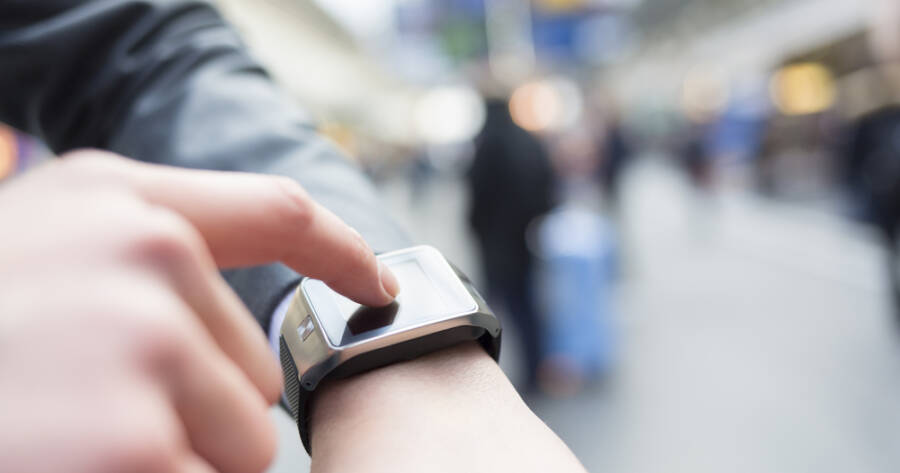Wearable technology has revolutionized how individuals approach their health, and could be game-changers for managing blood sugar levels. However, there are limitations, and these devices should be viewed as a supplement to—not a replacement for—medical guidance.
The Intersection of Wearables and Health
Wearables, from fitness trackers to heart-rate monitors, have become increasingly popular tools in personal health management. The rise of glucose-monitoring smartwatches seems to be a natural progression in this trend. These devices might offer individuals a convenient and non-invasive way to keep tabs on their blood sugar levels throughout the day.
At their core, glucose-monitoring smartwatches are designed to measure glucose levels using various methods, including optical sensors or interstitial fluid analysis. In contrast to traditional finger-prick tests or continuous glucose monitors (CGMs) that involve sensors embedded under the skin, these smartwatches may allow for a more comfortable experience. While research and development in this area are ongoing, and some models still require calibration or secondary testing methods, the potential exists for these devices to be valuable in day-to-day glucose management.
Potential Benefits of a Glucose Smartwatch
Convenience and Non-Invasive Monitoring
The primary appeal of a glucose-monitoring smartwatch lies in its convenience. Individuals may be able to check their glucose levels at a glance, just as easily as checking the time. If the technology continues to advance, these devices could provide people with a painless, non-invasive alternative to current glucose-testing methods. This ease of use may encourage users to be more consistent in monitoring their health, offering frequent updates throughout the day without the need for blood samples.
Real-Time Feedback and Data
One of the most exciting prospects is the potential for real-time glucose tracking. Continuous monitoring could offer users immediate feedback on how their food intake, physical activity, or stress levels are affecting their glucose levels. For instance, after eating a meal, individuals might see how their glucose levels fluctuate, potentially helping them make more informed decisions about their diet.
Some smartwatches might also allow users to view trends over time, offering a broader picture of how lifestyle factors influence glucose levels on a daily or weekly basis. This data could help users and their healthcare providers identify patterns, leading to more tailored and informed approaches to health management.
Lifestyle Optimization
Even for individuals without diabetes, a glucose-monitoring smartwatch could provide insights into how different factors impact their blood sugar levels. Exercise, stress, sleep, and diet all play a role in glucose regulation, and by monitoring their levels, users might begin to understand how these elements interact in their bodies. Some people, particularly athletes or those looking to optimize their nutrition, might find these insights useful for improving performance or energy levels.
While this aspect remains largely speculative, the potential is there for such devices to be incorporated into broader wellness strategies. Users could experiment with different foods or routines to determine how their choices affect their blood sugar, potentially supporting better energy management throughout the day.
Limitations and Challenges to Consider
Accuracy and Reliability
While glucose-monitoring smartwatches hold a great deal of promise, it’s important to acknowledge the limitations of this technology in its current state. Wearable glucose monitoring is still in its early stages, and there are questions about accuracy and reliability. Current technologies are not yet a perfect replacement for traditional CGMs or finger-prick tests, and users should be cautious about relying solely on their smartwatch for critical health decisions. Calibration or double-checking with more established methods may still be necessary in many cases.
Not a Replacement for Medical Care
Although these smartwatches might offer useful insights, they should not be seen as a substitute for professional medical advice or treatment. For individuals with diabetes, blood sugar management often involves a comprehensive care plan, including medications, diet, exercise, and regular check-ins with healthcare providers. A glucose smartwatch might complement this approach but should not be seen as an all-in-one solution. It’s crucial that users do not ignore traditional testing methods or alter their treatment plans without consulting a doctor.
Data Overload and Misinterpretation
Another potential challenge is the risk of data overload. With access to constant data, some users may find themselves checking their glucose levels obsessively, leading to unnecessary anxiety or confusion. Moreover, without proper understanding, users might misinterpret the data provided by their watch. For instance, glucose levels can fluctuate for a variety of reasons unrelated to serious health issues, and misreading these fluctuations could cause unwarranted concern. Proper education and guidance will be crucial for users to make the most of the data their smartwatch provides.
Learn More Today!
Glucose-monitoring smartwatches are a promising development in the world of wearable health technology, offering a potential tool for tracking and understanding blood sugar levels. While the convenience and non-invasive nature of these devices are appealing, it’s important to approach them with a measured perspective.
Their accuracy is still developing, and they should not replace more established methods or professional medical advice. In the future, these devices could play a significant role in personal health management, but for now, they serve as a supplement to traditional care, providing insights that may enhance overall wellness.
